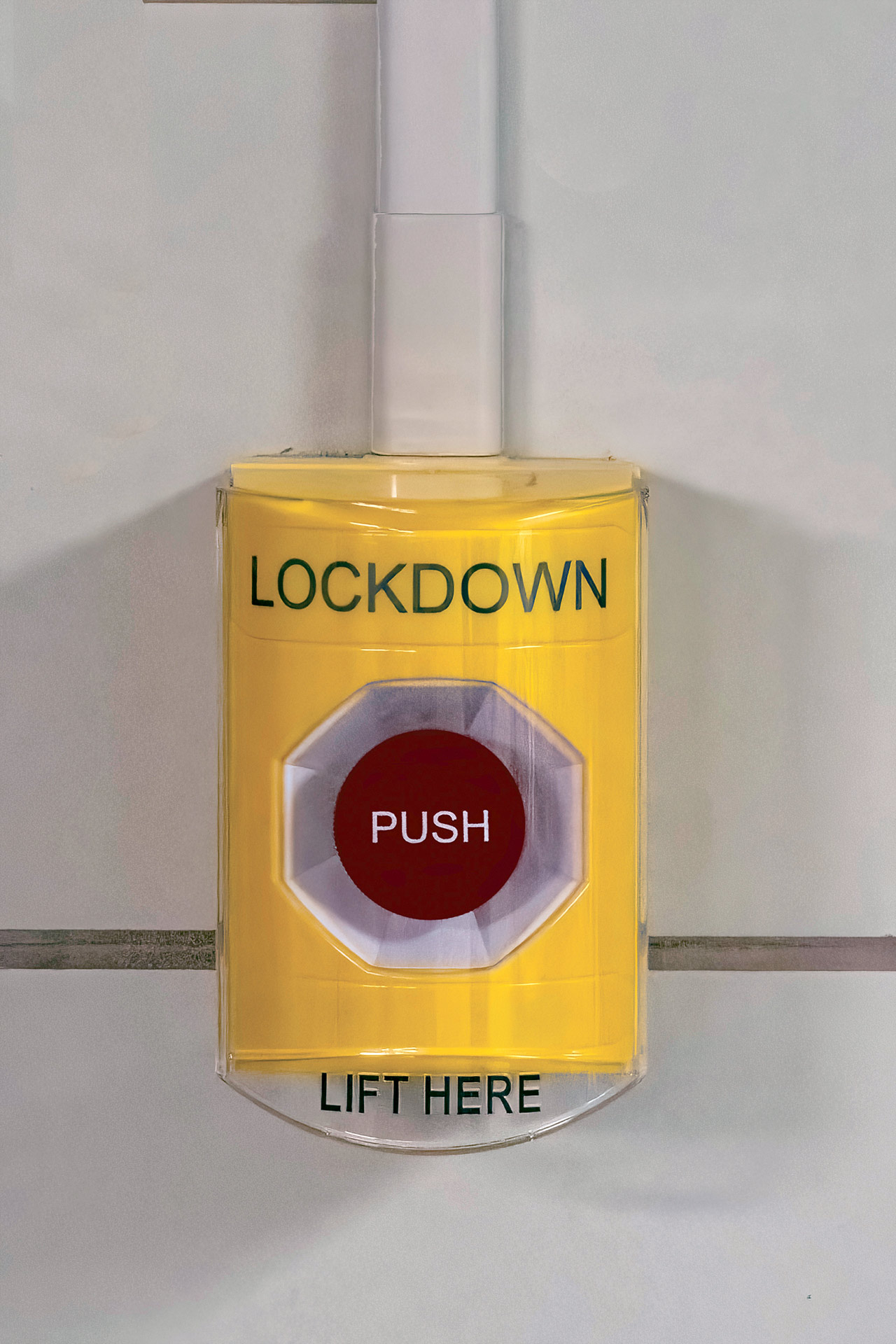[ad_1]

With schools across the United States back in session, student safety is the top priority for both educators and parents. The murder of 19 students and two teachers at Robb Elementary School in Uvalde, Texas, on May 24 reinforced the need for evidence-based school safety programs. However, the majority of schools in the U.S. are still training staff and students in a lockdown-only response to an active killer threat. As law enforcement, we must understand why a lockdown-only response is not effective and how to support schools transitioning to an options-based response system.
Lockdown
In response to a school active shooter event, lockdown is commonly defined as the action taken by staff and students to prevent an assailant from gaining access to their location. This is achieved by means of locking and/or barricading entry points, moving to safe locations or out of sight, using furniture or equipment for additional protection, reducing visibility by turning off lights and covering windows, and remaining silent.
In his piece “The Origins of Lockdown” (alicetraining.com/wp-content/uploads/2015/11/Origin
-of-Lockdown.1.pdf), Lieutenant Joseph Hendry set out to learn how this became the leading response for educational facilities during an active killer event. What he found was that lockdown was never created as a response to the phenomenon of school active shooter events as we know them today. With its roots in duck-and-cover, lockdown appears to have come out of Southern California in the late 1970s as a response to drive-by shootings and other “street-level” crimes. In the original lockdown response, staff and students would get back inside the building, lock exterior exit points, close curtains covering exterior windows, turn off lights and get on the ground. Sound familiar?
While our current lockdown responses mirror those of the original lockdown actions, there are some key differences. First and foremost, the threat was external to the campus — hence why there was no requirement to lock interior doors or place students in specific locations. Simply getting under the desk placed students below windows if someone was shooting at the building. Closing curtains helped contain shattering glass from projectiles, and turning off the lights decreased the chance of an assailant seeing shadows coming from a classroom. It is easy to see how lockdown was adapted from its original version as a response to school active shooter events post-Columbine.
Why isn’t lockdown the best system for staff and students? Primarily because it is a single-option response, only training staff and students to fortify a safe space. Lockdown assumes that the threat is not within the location stakeholders would use to create a safe space, and that stakeholders are actually in a space that can be secured. This ignores two decades of case studies where nearly all school active shooter events began within a safe space, such as a classroom, or a location that could not be reasonably secured, such as a hallway or the cafeteria.
More importantly, empirical evidence reveals two critical truths: the majority of school active shooter events end before external law enforcement assets are on scene, and the majority of incidents are ended by active resistance from onsite victims. So if not lockdown, then what? Options.
Options-based response
An options-based response, or multi-option response, is a fluid response system empowering users to utilize whatever option they believe is best for their safety. Primary response options to an active killer threat include escaping campus, securing a safe location or countering the attack. A fluid system means users to transition from one option to another at any time based on new information or conditions. An options-based response has been the recommended response model for kindergarten to 12th grade (K–12) schools since 2013. In 2013, the U.S. Department of Education, in collaboration with FEMA, the FBI, the Department of Justice and other partners, produced the Guide for Developing High-Quality School Emergency Operations Plans (rems.ed.gov/docs/School_Guide_508C.pdf).
The authors acknowledge the likelihood that the event may be over before police arrive: “Active shooter situations are unpredictable and evolve quickly. Because of this, individuals must be prepared to deal with an active shooter situation before law enforcement officers arrive on the scene.” The authors also explicitly state that a single response is not appropriate, and staff and students should be trained to use different options during a targeted attack: “No single response fits all active shooter situations; however, making sure each individual knows his or her options for response and can react decisively will save valuable time.”
The authors go on to describe the three primary options: “run, hide, or fight. You can run away from the shooter, seek a secure place where you can hide and/or deny the shooter access, or incapacitate the shooter to survive and protect others from harm.” Additionally, the authors reinforce the fact that an options-based response is a fluid process, giving users the authority to switch between options as necessary. “As the situation develops, it is possible that students and staff will need to use more than one option. During an active shooter situation, staff will rarely have all of the information they need to make a fully informed decision about which option is best. While they should follow the plan and any instructions given during an incident, often they will have to rely on their own judgment to decide which option will best protect lives.”

Barriers to change
Even with two decades of empirical evidence supporting the shift to an options-based response and best-practice recommendations from leading education and law enforcement agencies, the majority of K–12 schools are still using a lockdown-only approach. The two primary barriers to change are a lack of knowledge on how to implement an options-based system into training and drills, along with concerns on what is appropriate based on students’ ages and abilities. Most educational leaders who are exposed to the emergent research and evidence surrounding school active shooter events will acknowledge the benefits of an options-based system. However, the greatest challenge for superintendents and administrators is developing training and drills to put theory into practice.
School active shooter events are an emotional and often politically divisive topic. This creates unique challenges when trying to gain buy-in from staff on the need to be prepared as well as the adoption of an options-based protocol. At the forefront of this discussion is how to have age- and ability-appropriate conversations with students. Additionally, concerns about exposing staff and students to unnecessary fear or anxiety can create opposition to the change.
Law enforcement’s role
Law enforcement has the ability to support K–12 schools in adopting an options-based system and overcoming barriers to change. First, officers must familiarize themselves with empirical evidence on K–12 active shooter events. Officers should use the FBI and ALERRT’s Active Shooter Reports (fbi.gov/resources/
active-shooter-safety-resources) as the foundation for their research. Officers should learn about the age of assailants, their relationship to the targeted site, the type of weapons used, where the attacks began and how the attacks were resolved. Additionally, officers should acquaint themselves with active shooter preparedness recommendations from the U.S. Department of Education, National Association of School Resource Officers and National Association of School Psychologists, among others. Lastly, before conducting any training or making recommendations to school partners, officers should familiarize themselves with schools’ current protocols, walk the campus to understand any physical security limitations and observe a number of drills. Officers should take the time to interview administrators and survey staff to collect the necessary data to provide site-specific recommendations for creating training and drills tailored to the staff and students at each campus.
Conclusion
School districts have a legal, ethical and moral responsibility to provide a safe learning environment for students. This includes adopting emergency response procedures aligned to emergent research and best-practice recommendations. “We don’t know how” or “It will scare our students” are not excuses when it comes to the lives of our educators and children. Law enforcement officers have the ability to fully integrate with their local schools in order to support them in transitioning from a lockdown-only response to an options-based response system.
[ad_2]





